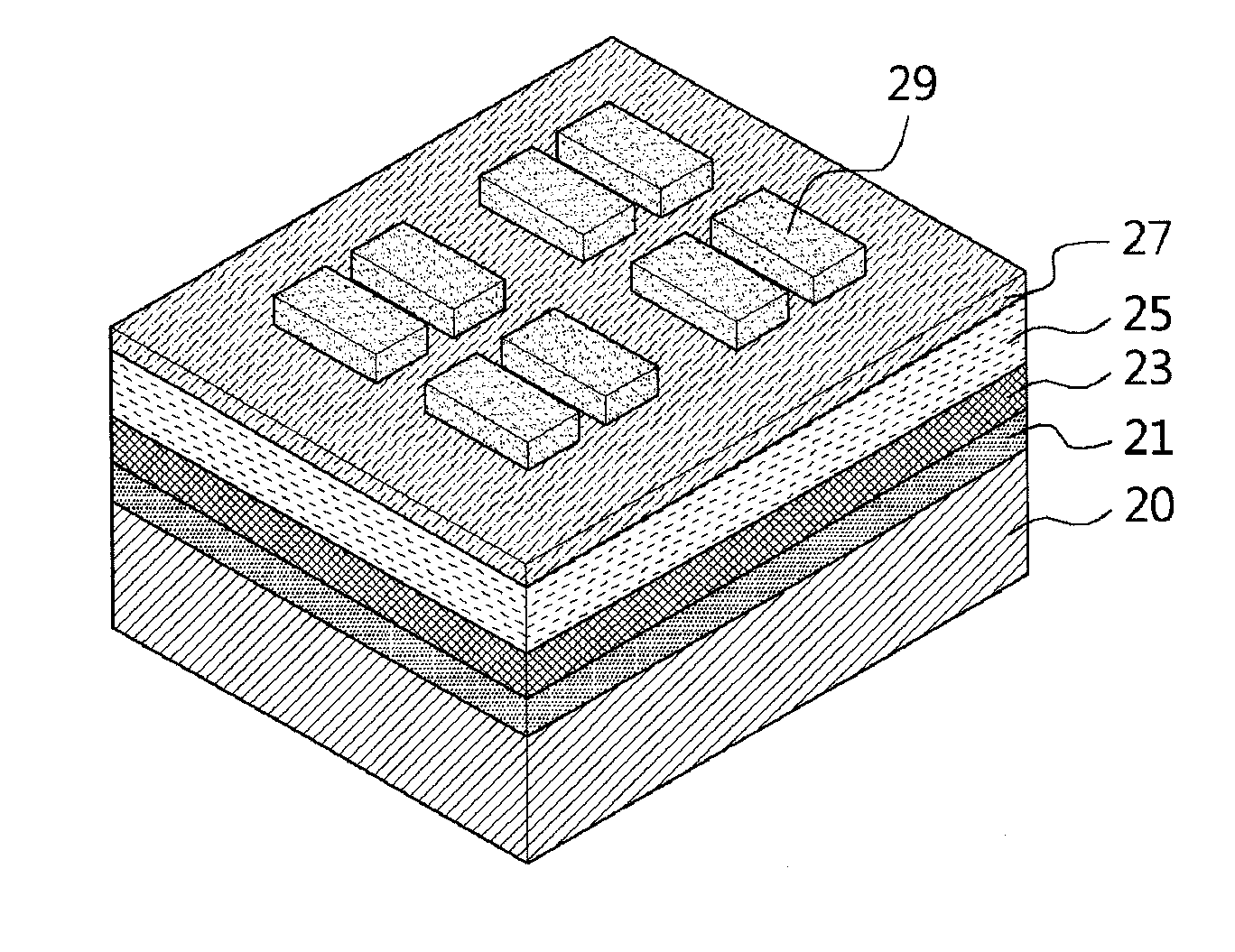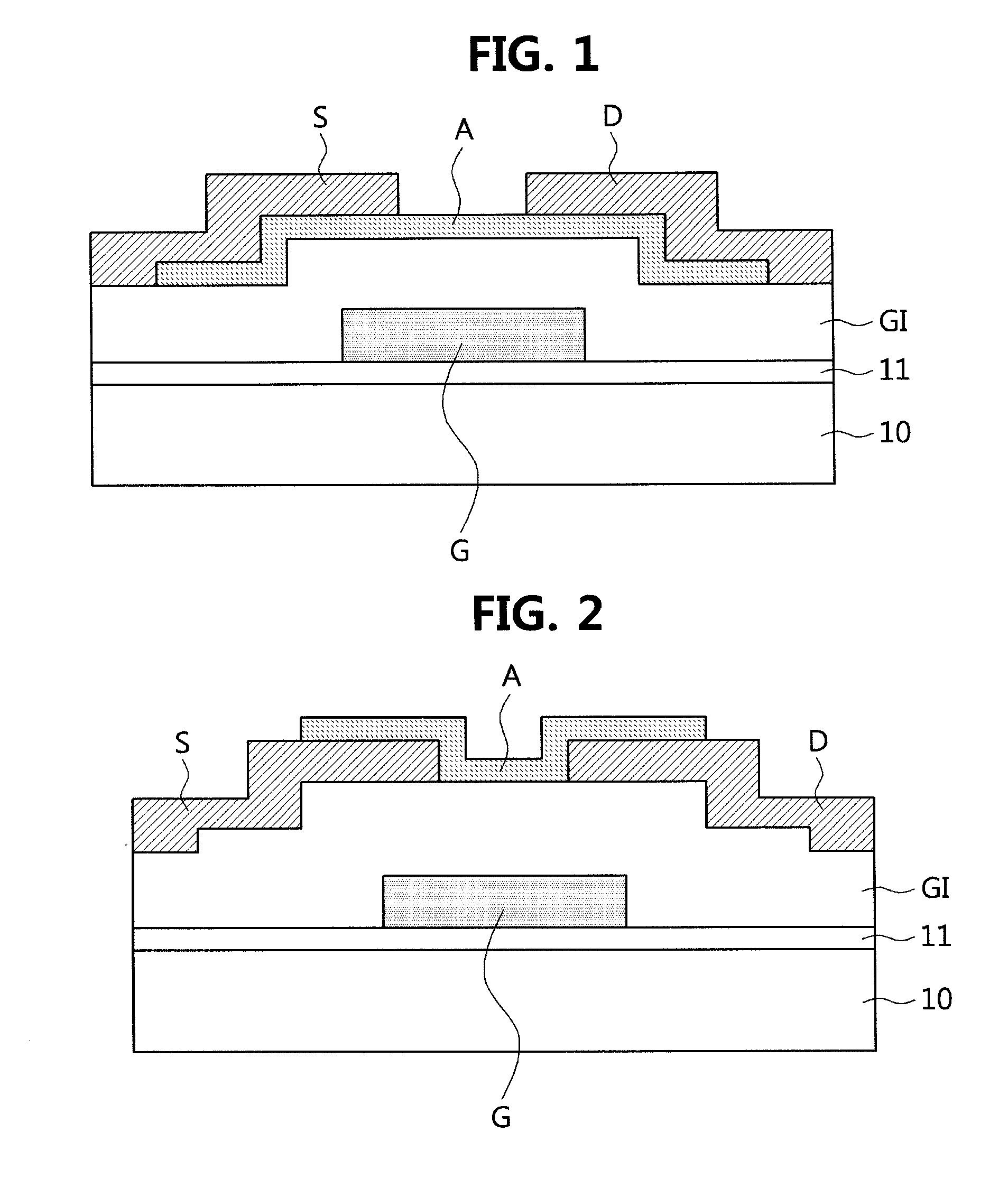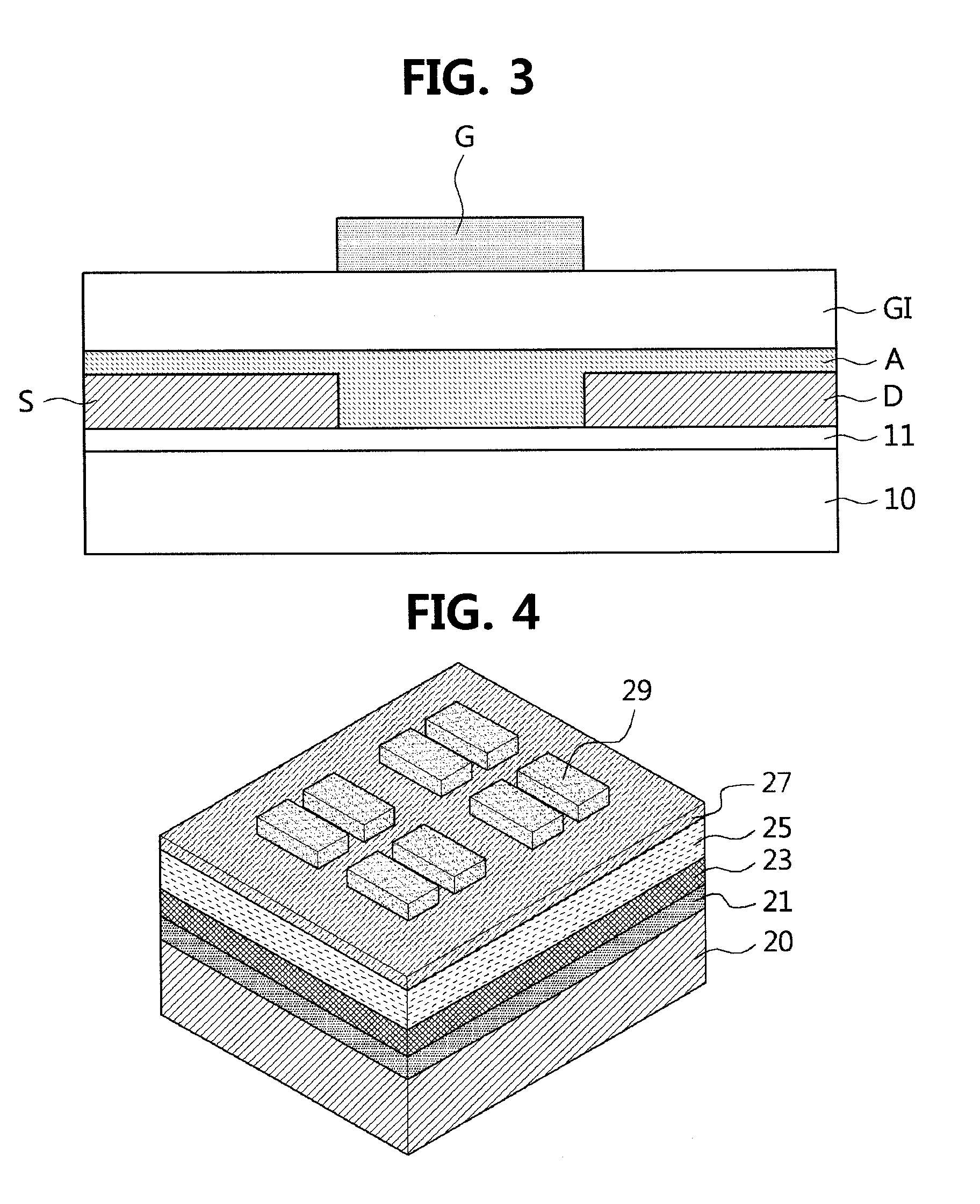Polymer containing thiophene unit and thienylenevinylene unit, and organic field effect transistor and organic solar cell containing the polymer
a technology of thiophene and thienylene, which is applied in the field of organic field effect transistors and organic solar cells, can solve the problems of grain boundary, easy defects, and difficulty in manufacturing devices having uniform performance on a large area, and achieve the effect of high crystallinity
- Summary
- Abstract
- Description
- Claims
- Application Information
AI Technical Summary
Benefits of technology
Problems solved by technology
Method used
Image
Examples
synthetic example 1
Synthesis of Polymer (I)
[0140]
[0141]12.28 g (75 mmol) of compound (a) (namely, 3-bromothiophene (Aldrich)) and 1.5 mmol (2 mol % of compound (a)) of Ni(dppp)Cl2 were dissolved in 60 ml of ether, and cooled to 0° C. Then, 84 mmol of a Grignard reagent (dodecylmagnesium bromide) was slowly added, and the resulting mixture was then refluxed for 12 hours. After the reaction, the mixture was cooled to 0° C., neutralized with hydrochloric acid (HCl), and then extracted with ether (a work-up process). The extract was purified through a silica column to obtain compound (b) (yield: 91.37%).
[0142]7.57 g (30 mmol) of compound (b) was put into a 2-neck flask, and acetic acid (AcOH) and CHCl3 were added in a content of 60 ml (volume ratio 1:1), respectively. 30 mmol of N-bromosuccinimide (NBS) was dissolved in 80 ml of DMF, and then slowly added at 0° C. to the flask using a dropping funnel. Then, the resulting mixture was reacted at 0° C. for 3 hours. The reaction was quenched by adding water t...
synthetic example 2
Synthesis of Polymer (II)
[0149]
[0150]Compound (h) was prepared using the same method as described in Synthetic Example 1. 0.8 mmol of Ni(COD)2 and 0.82 mmol of dipyridil were put into a flask, and dissolved in 10 ml of DMF. Then, the resulting mixture was kept at 80° C. 0.7 mmol of compound (h) dissolved in toluene, and compound (j) were slowly added to the mixture, and reacted for 48 hours. After the reaction, the resulting reaction mixture was precipitated from methanol, and the precipitate was filtered off to obtain the desired polymer (II) (yield: 40%). A molecular weight (Mn) of the desired polymer (II) was 8200, and its polydispersity index was 1.6.
synthetic example 3
Synthesis of Polymer (III)
[0151]
[0152]0.681 g (28.01 mmol) of Mg was added to 60 ml of anhydrous THF, and stirred in a nitrogen atmosphere. 5.301 g (16.06 mmol) of compound (c) prepared in Scheme 1 of Synthetic Example 1 was added to the resulting mixture, and refluxed for 2 hours. Then, the resulting mixture was cooled at room temperature, and 3.28 ml (40 mmol) of DMF was slowly added to the mixture, and refluxed for 24 hours. Subsequently, the resulting reaction mixture was cooled at room temperature, and the reaction was quenched by adding 20 ml of 1M HCl to the reaction mixture. The reaction mixture was purified on a silica column having hexane and ethyl acetate as a mobile phase to obtain compound (j) (yield: 85%).
[0153]100 ml of anhydrous THF was cooled to 0° C. in a nitrogen atmosphere. Then, 1.772 ml (16.11 mmol) of TiCl4 was injected and stirred for 30 minutes. Subsequently, 2.107 g (32.22 mmol) of zinc (Zn) was added, and refluxed for 1 hour, and the resulting mixture was ...
PUM
| Property | Measurement | Unit |
|---|---|---|
| temperature | aaaaa | aaaaa |
| volume ratio | aaaaa | aaaaa |
| PDI | aaaaa | aaaaa |
Abstract
Description
Claims
Application Information
 Login to View More
Login to View More - R&D
- Intellectual Property
- Life Sciences
- Materials
- Tech Scout
- Unparalleled Data Quality
- Higher Quality Content
- 60% Fewer Hallucinations
Browse by: Latest US Patents, China's latest patents, Technical Efficacy Thesaurus, Application Domain, Technology Topic, Popular Technical Reports.
© 2025 PatSnap. All rights reserved.Legal|Privacy policy|Modern Slavery Act Transparency Statement|Sitemap|About US| Contact US: help@patsnap.com



